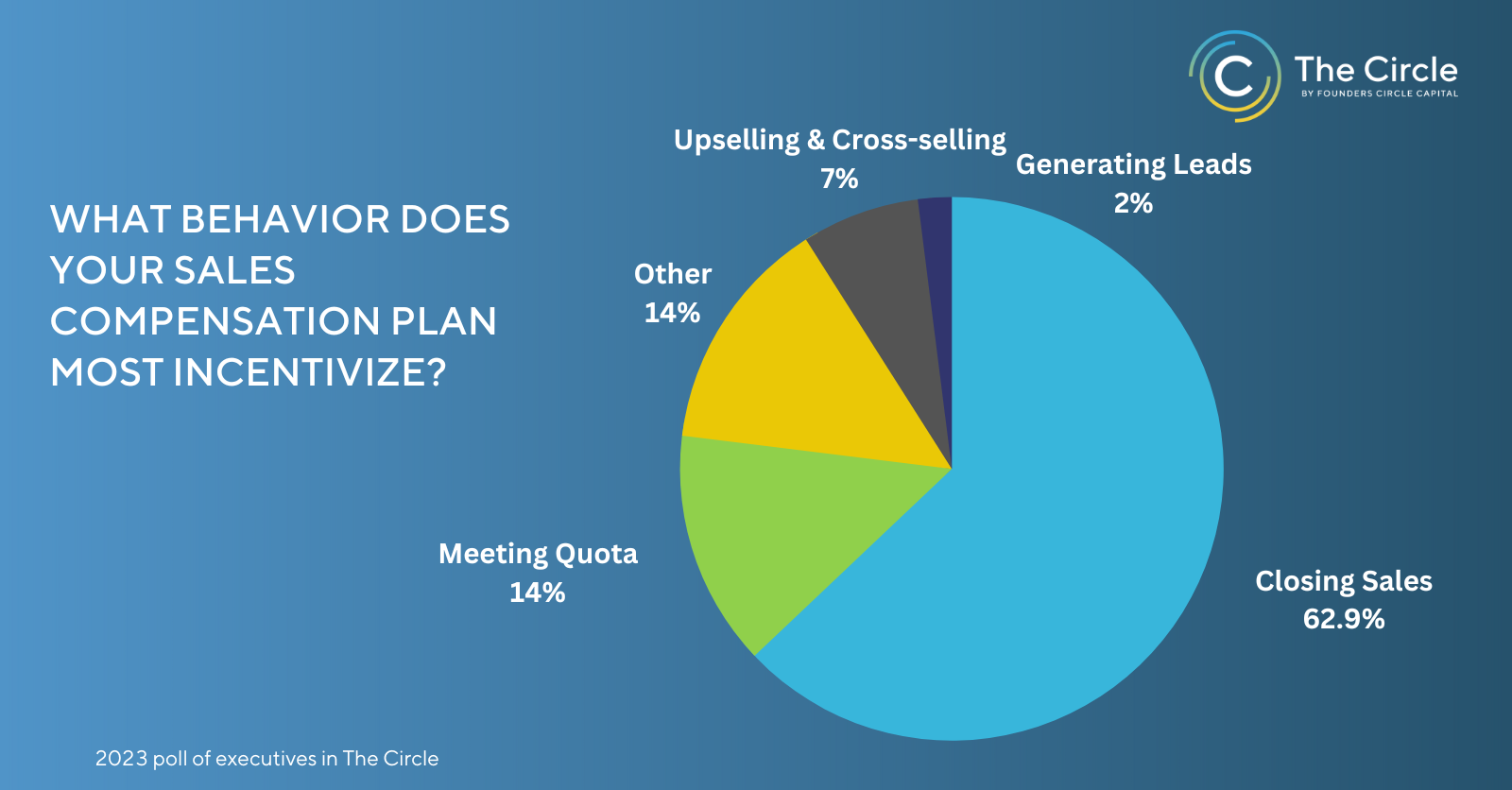Trending
Top CFO Tactics for Reducing Software Spend & Consolidating Systems
/in I'm Looking for Strategic Planning Tips, Software Stack for Growth Companies, Systems & Processes, Trending, Featured on Home/by Matt McCue4 Considerations To Craft Your Company’s Equity Strategy
/in I Need to Retain my Top Performers, Secondary Liquidity, Developing Your Team, Talent, Trending, Equity & Compensation, Featured on Home/by Matt McCueAdvancing Your Influence: Strategies for CFOs
/in CFO Leadership, Leadership & Vision, Developing Your Team, Talent, Trending, Featured on Home/by Matt McCueShare this entry

Designing a Sales Compensation Plan
Best Practices for Plan Structure, Quota Setting, and Managing Morale
A sales compensation plan can be a double-edged sword: done right, it is a powerful tool for motivating salespeople, but done wrong, it can quickly misalign incentives or demotivate them. At a minimum, your sales compensation plan should clearly define how much your individual sales representatives can earn in terms of base and variable compensation. However, the right strategy can also improve sales efficiency, support retention, and foster a culture of accountability.
While every sales compensation plan will differ, some guiding principles and best practices can help lay the foundation for long-term success. We invited two experts with extensive backgrounds in sales compensation strategy – Chris Semain (Principal at The Alexander Group) and Michael McBride (former Chief Revenue Officer at GitLab) – to share some of those best practices with people and finance executives in The Circle.
Compensation Plan Design: 5 Guiding Principles
The first question you will want to ask when designing a sales compensation plan is: what behavior am I trying to motivate? For instance, 62% of companies we polled in The Circle said their sales compensation plans focus on closing sales. Having that “why” documented is critical as it informs each supporting component of your plan, from eligibility to communication and administration.

Whatever your desired outcome, your plan must be motivating enough to attract and retain an effective sales force. Michael and Chris offered some insights on what makes a motivating sales compensation plan:
- Achievable stretch quotas – Setting the right sales target is a delicate art and a science (more on that in the next section), but by and large, your sales team needs to feel that their sales targets are aggressive yet still achievable.
- Competitive incentive pay curves – Don’t just focus on a sales target and mix of salary and commission. Your sales compensation plan must offer competitive pay curves and accelerators that reward top performers.
- Transparency – Even the best sales compensation strategy will only be effective if your sales team has a clear line of sight into how the compensation plan works, what their goals are and how they can achieve them.
- A degree of control over the outcome – Your sales representatives need to feel they can influence the likelihood of achieving their goal rather than success being predicated on the company or other team members.
- Alignment to the needs of the company and market conditions – Your sales targets need to be tightly aligned to the company’s current needs, whether that’s getting more bookings or acquiring a specific type of customer. At the same time, your plan needs to reflect the realities of the selling environment; if the market adds more friction to the selling process, your sales expectations must reflect that.
Perhaps most importantly, your sales compensation plan needs to be tied to a well-designed and realistic operational plan tied to broader organizational goals:
“Holding yourself responsible for that operating plan at the top of the funnel will help you set more achievable and appropriate compensation plans based on real-world productivity. If you set the operating plan based on existing productivity and whatever additional capacity you plan to have, then you identify the incremental investments that will genuinely drive increases in productivity, and that can be upside within the plan.” – Michael McBride, former Chief Revenue Officer, GitLab
Setting and Adjusting Sales Quotas
Sales quotas are essential for benchmarking individual performance against company goals. But be careful not to set quotas too high (or too low).
One way to measure whether a sales quota has been set at the right level is to look at the participation rate, which is the percentage of sales representatives at or above the quota. The right participation rate is going to depend on your company’s philosophy; however, best practices say anywhere between 50-65% of your sales representatives should be at or above quota. “The latest median benchmark in the XaaS marketplace is about 40% of sales representatives at or above quota,” said Chris.
Sales quotas are generally one of the key problem areas for people leaders as they can be impacted by many different factors, including the company’s pricing model and the nature of the sales cycle. If you’re planning to set a quota and are not sure where to start, here are two strategies to consider:
- Experiment with target periods – Sometimes quotas are set on too short or too long a period and do not reflect the realities of the selling environment. If you’re not confident about the accuracy of a quota, consider a shorter performance period, such as monthly quotas that get reassessed every six months. This gives your sales representatives visibility into their long-term targets while giving you the flexibility to adjust if participation rates aren’t where they need to be.
- Start without a quota – Removing the quota entirely may be the right initial strategy for early-stage companies or products as your sales representatives develop their selling motion. Michael and Chris cautioned that you’ll want to ensure this strategy doesn’t lead to inequitable selling practices or favoritism among specific selling regions.
Michael added that, for most companies, quotas and sales targets are an opportunity for sales representatives to learn how to sell in a repeatable manner. Therefore, companies should use them to equip their team to find and repeatedly sell to customers rather than getting hung on a specific revenue target or selling to a particular client segment.
Align Your Compensation Plan to Your Pay Philosophy
It’s essential to align your sales compensation plan to your overall pay philosophy to make consistent compensation decisions. Usually, this starts with determining at what percentile you want to pay your sales representatives relative to the market and with what combination of base and variable pay. From there, you can pull different levers within your compensation plan to drive the outcome you need. For instance, if you’re trying to motivate your middle-performers to produce more, consider moving from a linear pay curve – which incentivizes sales representatives to hit the same number each month – to a graduated pay curve that offers incrementally higher bonuses as sales representatives move closer to hitting 100% of their target. For this approach, you’ll likely want to start with a lower base commission to manage costs; but a steeper pay curve can help incentivize middle performers to outperform rather than punt deals to the next quota period.
Ultimately, your sales compensation plan must reflect the culture you want to foster within the sales organization.
“There are different models in the marketplace. Some organizations want a ‘nice place to work’ model where there may not be much differentiation between low and high performers. Other organizations follow a more Darwinian model that offers much larger payout differentiation between high and low performers. And some organizations want to promote team-based selling.” – Chris Semain, Principal at The Alexander Group
Each of these approaches has different benefits and drawbacks, and this should be an ongoing dialogue between the senior HR and sales leaders. “I’ve always had a very close relationship with my business partner in the people organization,” said Michael. “They come to every offsite and leadership call, and that creates a trusted partnership.”
Managing Morale Through Clawbacks and Credit Events
Subscription-based companies that use clawbacks in their sales compensation plans often worry about the impact on employee morale. Clawbacks (i.e., when commission payments are repaid to the company if a customer churns or cancels an order) can incentivize sales representatives to take more ownership of customer implementation and retention but can also frustrate or confuse them.
While it’s reasonable for your sales team to expect to be paid at “the point of persuasion,” clawbacks or withholding credit can help ensure they’re selling the right way to the right customers or incentivize collaboration. Creating a Deal Desk can help formalize the process for how deals are negotiated and ultimately approved. At the same time, clawbacks can also be positioned as a post-sales incentive that gets paid out after implementation or as professional services get added. “You’re paying the same dollars for both outcomes, but it feels much better to the team because they get paid for at the point of booking and rewarded for attaching professional services or getting the deployment, which is good for the company too,” said Michael.
Supporting Career Advancement
Your sales compensation plan can also be structured to support performance management and individual career development, both of which are critical to attracting and retaining an effective salesforce. “Performance management is important for leveling up your team, ensuring everyone is meeting performance expectations, and creating openings for existing team members to take on more responsibilities,” said Chris.
Michael has found success in having each sales representative write out a career development plan alongside their manager and the people team. This plan helps them clearly understand what milestones they need to reach before the next level in their career. At the same time, companies can increase leveling within a single title – i.e., account executive I, account executive II, etc. This approach helps avoid title inflation for sales representatives who may need more time to manage a team while rewarding them with compensation lifts and access to the coaching they need to get to that next level.
The Takeaway:
Sales compensation plans are a powerful lever for attracting and retaining talent and aligning individual behaviors to company-wide goals. It’s essential to start with an overarching goal and guiding principles and to measure performance against desired outcomes regularly.
Want to join discussions like these with other growth-stage leaders? Apply to join The Circle and access a private leadership community that regularly exchanges ideas, insights, and support through content and programming.
Related Blog Posts

Advancing Your Influence: Strategies for CFOs
Bold Leadership: 5 Moves CFOs Should Make to Succeed in 2024




